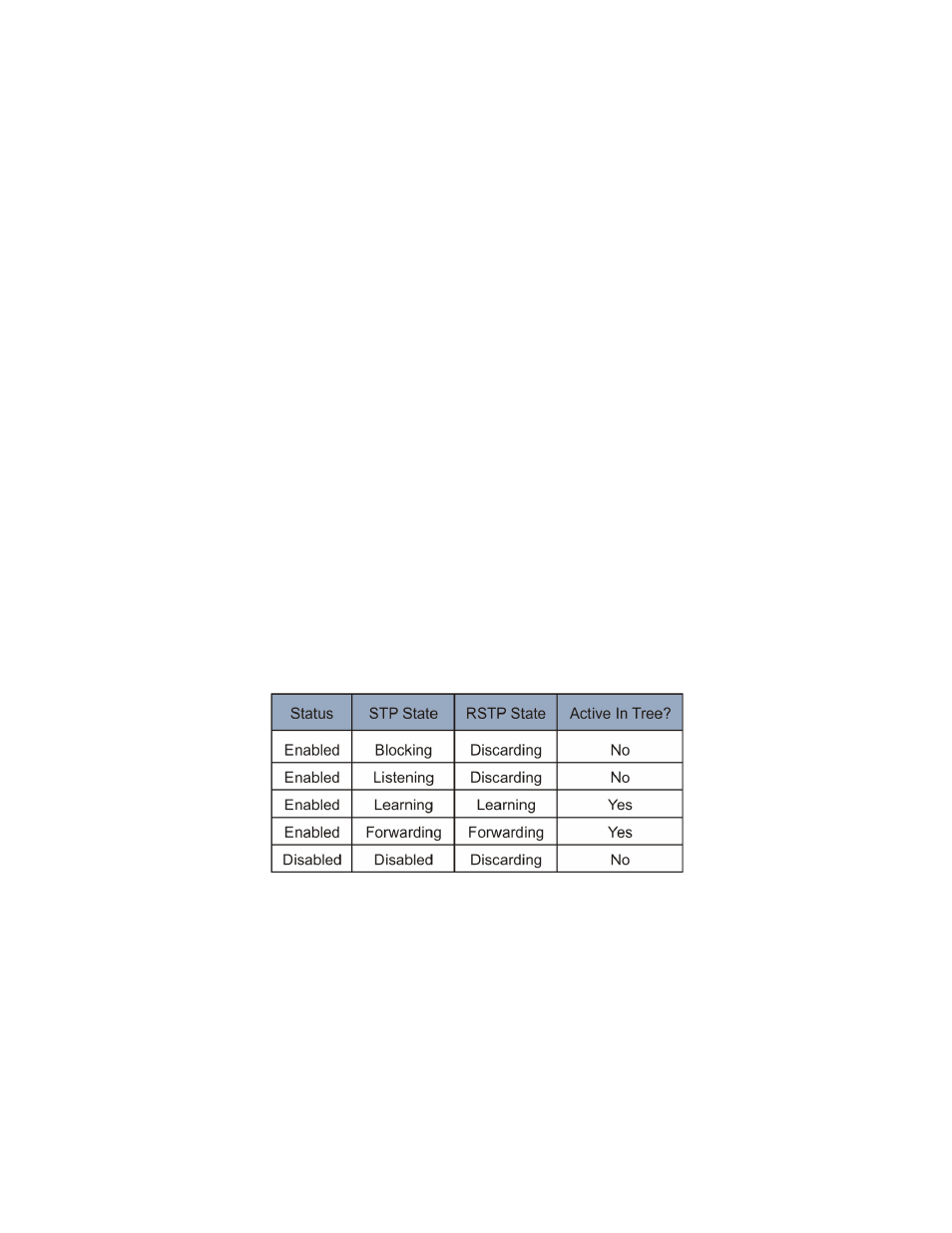Contemporary Control Systems Compact Managed Switches Software Manual for Console Access User Manual
Page 62

TD020850-0MG
62
STP State may report any of three states:
Forwarding indicates the RSTP port is actively participating in the tree — that is, it is not
currently a backup or alternate port. The port forwards frames, and continues to
learn new addresses. If RSTP is
disabled as in Figure 53, each port is reported
to be in the Forwarding state (whether the port is Up or Down) — but this has no
meaning since the tree is disabled.
Learning is the brief port state (as it begins to learn addresses) before its forwarding
delay expires. Actually, this state is rarely reported on screen, but could be if the
user happens to refresh the monitor screen while a port is transitioning from
Discarding to Forwarding. This Learning state will only occur as the tree is being
restructured — as must be the case in the sample of Figure 52.
Discarding is reported if the port is not active in the tree. The port receives STP frames,
but it does not forward frames. If the tree is stable and port states are consistent
throughout the network, every root port and designated port will quickly transition
through its Learning state to the Forwarding state. At the same time, all alternate
and backup ports will stay in the Discarding state because they are not active in
the tree.
Comments on Figures 52 and 53: A link may be reported as Up even if its associated
port is not active in the tree. A look at Figure 52 reveals that although its link is Up, port
8 is Discarding — therefore port 8 is either a backup or an alternate port. Port 3 is listed
as Up and Forwarding — thus, it is active in the tree and working properly. Port 2 is Up,
but its state is momentarily Learning — so port 2 will soon become Forwarding.
Only RSTP port states (which superseded STP states) are shown in the monitor screen.
For those wish to compare the port states of RSTP versus STP, refer to Table 2.
Table 2 — STP & RSTP Port States Compared
The
Link Status column of the Monitor STP Port Status screen simply reports if a port
is Up or Down. It does this even if the RSTP/STP function is disabled.
Root ID is a read-only value of the MAC Address of the root switch. However, if the
switch under consideration is the root switch, it reports as “Self”.
